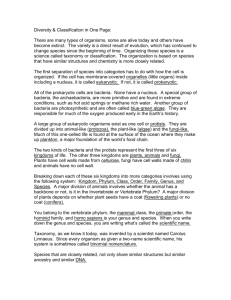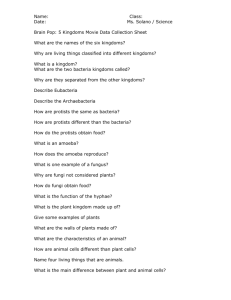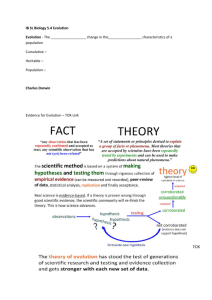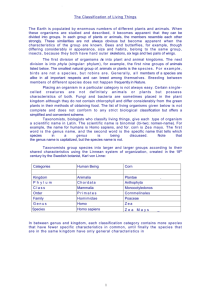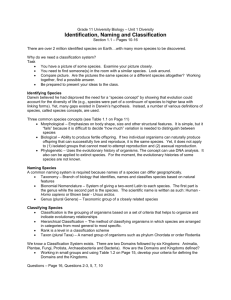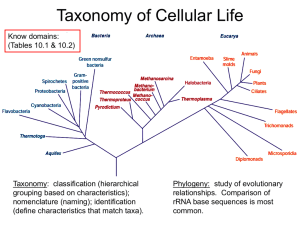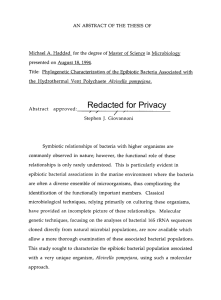Early evolution of life on Earth
advertisement
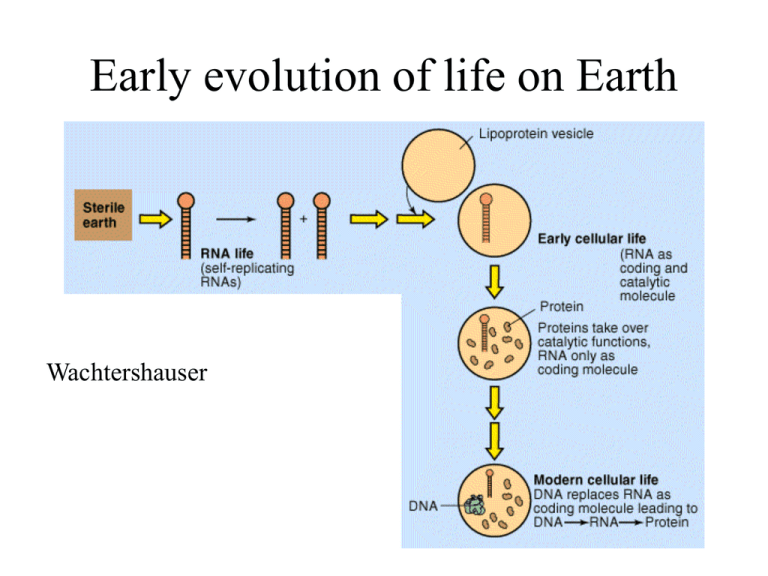
Early evolution of life on Earth Wachtershauser Miller and Urey experiment Early catabolism Evolution of cell types Primitive Metabolism • Early catabolism must make use of chemical disequilibria • Later, photosynthetic energetics may have evolved – First photosynthetics were undoubtedly anaerobic photosynthetic bacteria – Later, oxygenic photosynthesis changed the chemistry of the Earth • In addition to O2 being an electron acceptor for respiration, it caused development of an O3 layer Summary First evidence for potential life 3.8 billion yrs ago • • • other fossil evidence molecular fossils chemolithotrophy vs heterotrophs, who came first? • anoxygenic photosynthesis • oxygenic photosynthesis • Banded iron formations (BIFs)-red beds Evolution of cell types Endosymbiosis Taxonomy • Until recently, life on Earth in 5 kingdoms: – – – – – Bacteria Fungi Protists Plants Animals • Division between Bacteria, Archaea, and Eukarya more profound than former kingdoms: level called domains Taxonomic Ranks • Empire or Domain • Kingdoms (Bacteria and Eukarya not yet divided into kingdoms) • Phylum • Class • Order • Family • Genus • Species (name is binomial: genus + epithet) Bacterial Taxonomy • Bacterial species is the base unit for taxonomy – – – – Definition of any given species is subjective >70% sequence similarity of genome >98% sequence similarity of rRNA Each species is phenotypically distinct Evolutionary Chronometers • Phenotypic characteristics • Mole percent Guanine + Cytosine • DNA sequence similarity (gross sequence similarity) – Good at the species level • Small-subunit RNA (16S rRNA of prokaryotes; 18S of eukaryotes) Phenotypic Taxonomies • Phenotype determination is classic taxonomic method • Today more reliance on molecular methods for taxonomies above the genus level – Still, phenotypic differentiation is considered requirement for separation of species • Some methods collect large amounts of phenotypic data quickly – FAME analysis – Pyrolysis/GC – Automated testing of enzymatic activities Range of G+C contents DNA hybridization 16S rRNA as evolutionary chronometer Evolution of sequences Evolutionary distance and correction for back- or multiple mutations Generation of evolutionary trees Molecular microbial ecology • Signature sequences identify phylogenetic groups – 16S & 18S sequences identify Bacteria, Archaea, and Eucarya • Probes can be developed for FISH (fluorescent in situ hybridization) Community analysis by molecular methods
